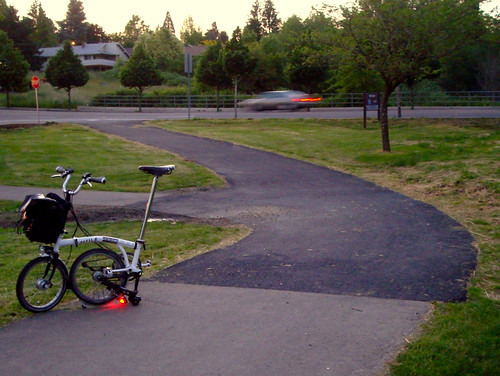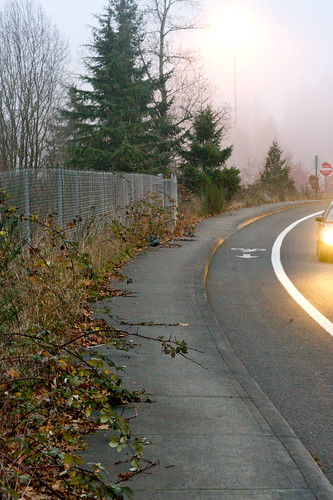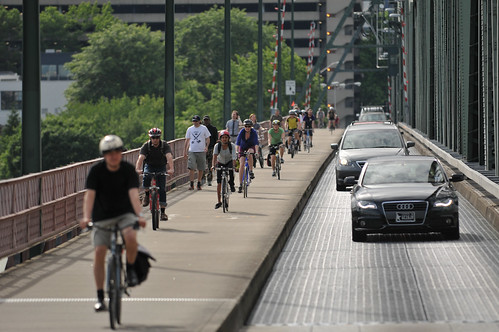
Should a city focus on big, high-profile facilities or should they focus on building a network of safe, low-stress connector streets and trails if they want to make riding a bike safer and easier?
It’s a chicken-or-egg sort of conversation I got into with Shane MacRhodes, Program Manager of Eugene Safe Routes to School, while we were riding around Eugene with Bob Passaro, publisher of Eugene Bicyclist.
Our conclusion was that one can’t exist without the other if either are going to live up to their full potential.
For example, take a look at where the Fanno Creek Trail crosses Hall Boulevard.
The Fanno Creek Trail is a convenient route that many people can use to transport themselves around Washington County. When the trail reaches Hall Boulevard anyone who wants to get across has to go well out of their way to find a safe, marked crossing.

The result is that the Fanno Creek Trail near Hall Boulevard gets less use than other sections of the trail that don’t come to a dead stop.
Another example, this one of a large facility without safe connecting routes, is the bicycle and pedestrian bridge over I-5 near Kruse Way and Highway 217.

You probably have driven under this bridge, located over I-5 about 10 miles south of downtown Portland, but you may not have noticed it. That’s partly because the getting to either side of the bridge can be unsafe and the bridge is nearly impossible to find.
Here’s the cross walk on the west end of the bridge…

And here’s the sidewalk leading up to the east end of the bridge…

Accessing the Kruse Way bridge is unpleasant, at best. The condition of crosswalks and sidewalks leading to the bridge may prevent some people, especially those with mobility limitations, from accessing the bridge at all.
Building a safe transportation network and a big facility that work together make both more than a sum of their parts. The Hawthorne Bridge in Portland and the DeFazio Bridge in Eugene are examples where that combination has proved successful and people have responded by coming out on their bicycles in droves.

(Photo © J. Maus/BikePortland)
In order to get the most out of every scarce dollar we spend on transportation, planners must “think big” when it comes to barriers like freeways and rivers but they also must make sure there are safe, comfortable connections to their big ideas.

